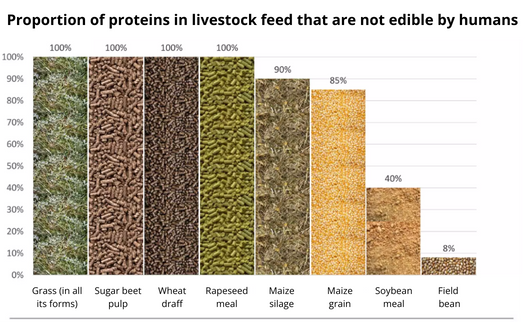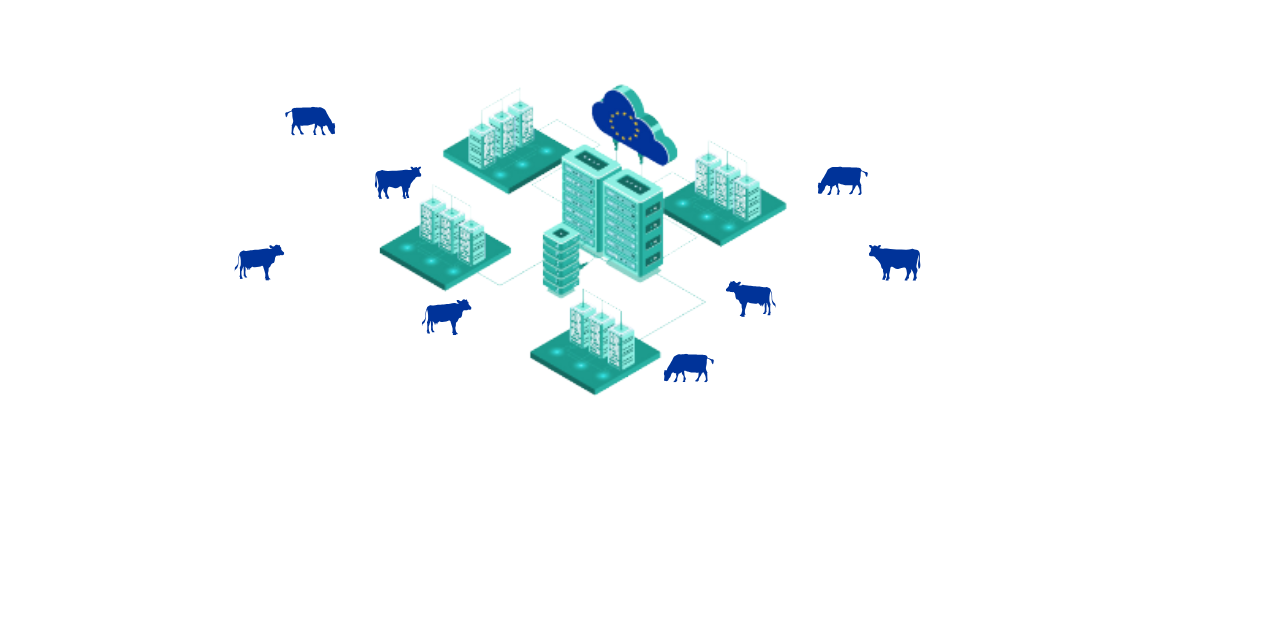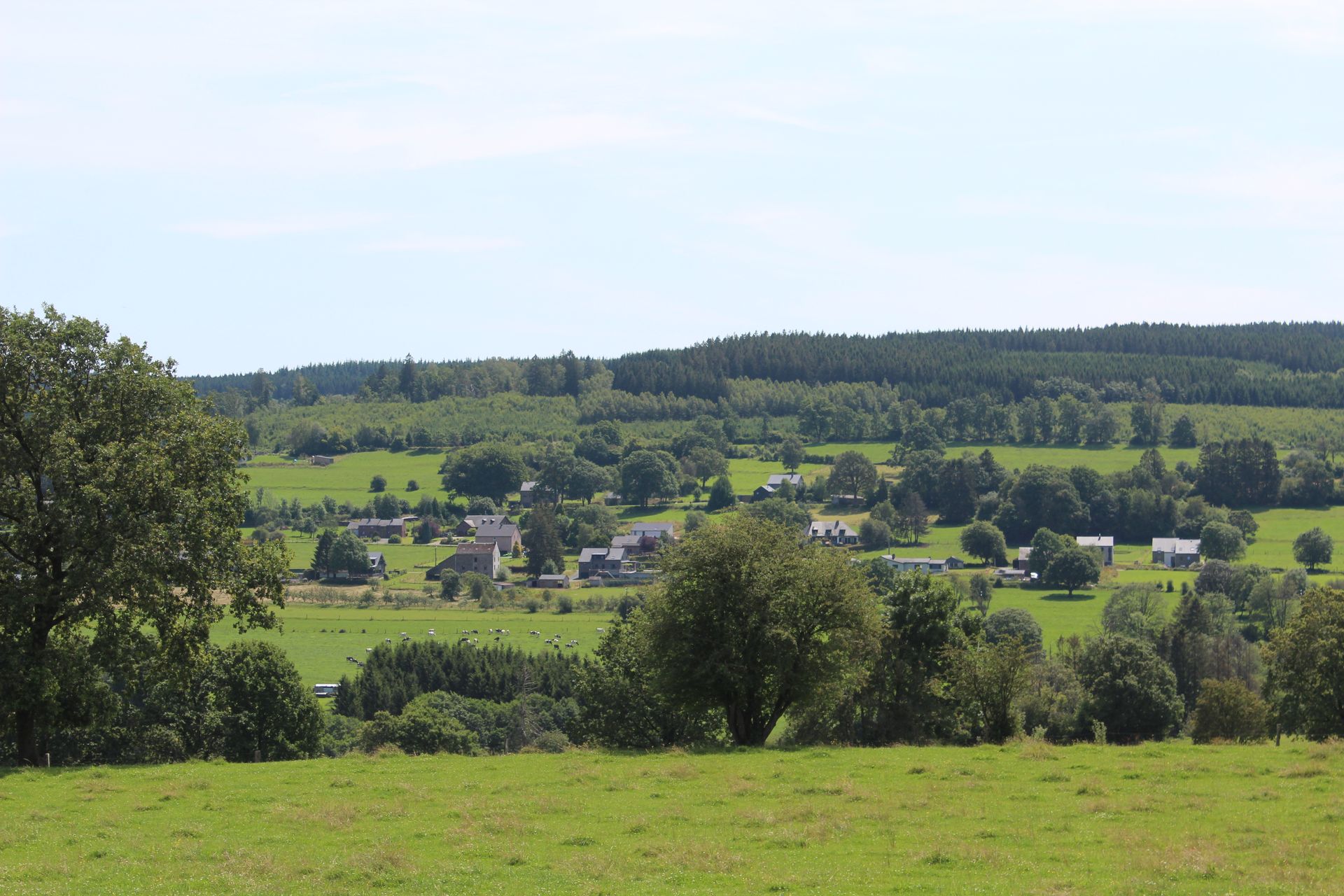“Livestock farming uses land that could be used directly to feed humans”
Do dairy cows really eat at our table and from our plates?
Source: https://ourworldindata.org/grapher/feed-required-to-produce-one-kilogram-of-meat-or-dairy-product
You might have seen such data already and it might have shocked you that it takes so much feed to produce only one kilogram of meat or dairy product. Some people might think: “what a waste of land”, or “we should produce food for humans rather than cattle feed”, or “if we all go plant-based, we could reduce considerably the global land use for agriculture because we would grow plants directly for human consumption”.
The question today is: does livestock farming waste resources?
If we consider the quantity of plant protein a dairy cow must eat to produce 1kg of animal protein (dairy product or meat), we see that a cow has an efficiency of ~20% (5kg of plant protein (feed) to produce 1kg of animal protein (food)). We could therefore charge cows to “steal from our plates” and talk about a high feed/food competition, meaning that edible crops and other resources should be used to feed people directly instead of feeding livestock.
BUT…
These 20% actually represent the gross efficiency. One important thing to consider in this equation is the type of feed used for feeding livestock and therefore used to produce animal proteins. Well, livestock actually rely primarily on forages, crop residues and by-products that are not edible by humans. Our bodies indeed cannot digest grass (which represents a big part of the livestock diet!), fodder crops, wheat draff, etc.

Source: ERADAL project (Idele)
➡️ Many studies* indeed revealed that between 86% and 89% of the livestock feed intake is made of products that are inedible by humans!
These results enable us to say that there is almost no food/feed competition between ruminants and humans.
Something else to take into account is the (in)ability to grow crops in some regions. For example, it would be very complicated to grow crops in the mountains, as the machinery needed to harvest would not have access to these crops. It therefore makes a lot of sense to have pastures where cows can graze in the mountainous regions. Another example is given in this video, where one of our pilot farmers explains that in his region, the quality of the soil is not good to grow crops. To the contrary, the soil in this region is perfect to grow grass. Thanks to livestock farming, the landscape is covered with woods and beautiful pastures full of cows grazing peacefully, which makes the region very attractive for tourists, bringing economic value to the local communities.
Landscape in the village of Malempré, Ardennes, Belgium, where Vincent Sepult has a dairy farm and a holiday cottage.
If pastures represent a big part in the cows’ diet, there are also very important for a lot of other reasons! Learn more about pastures in our next blog post.
* If you want to go further, here are some resources on which this article is based:
- Our partner Idele has carried out a project between 2017 and 2021 to evaluate the efficiency of the use of food resources in dairy production to produce food for human consumption. Check out the project as well as the results here. They also produced very interesting materials such as videos or a board game to learn more about the feed-food competition between dairy cattle (cows, sheeps and goats) and humans.
-
Check out this article from Teagasc presenting the results of a study that
evaluated the food-feed competition in Ireland’s dairy sector.
- FAO study about the food/feed debate: summarized or full study.
- For German-speakers, this article summarizes a study carried out in Switzerland in 2019.
- Another
study run in the context of an Interreg project.

